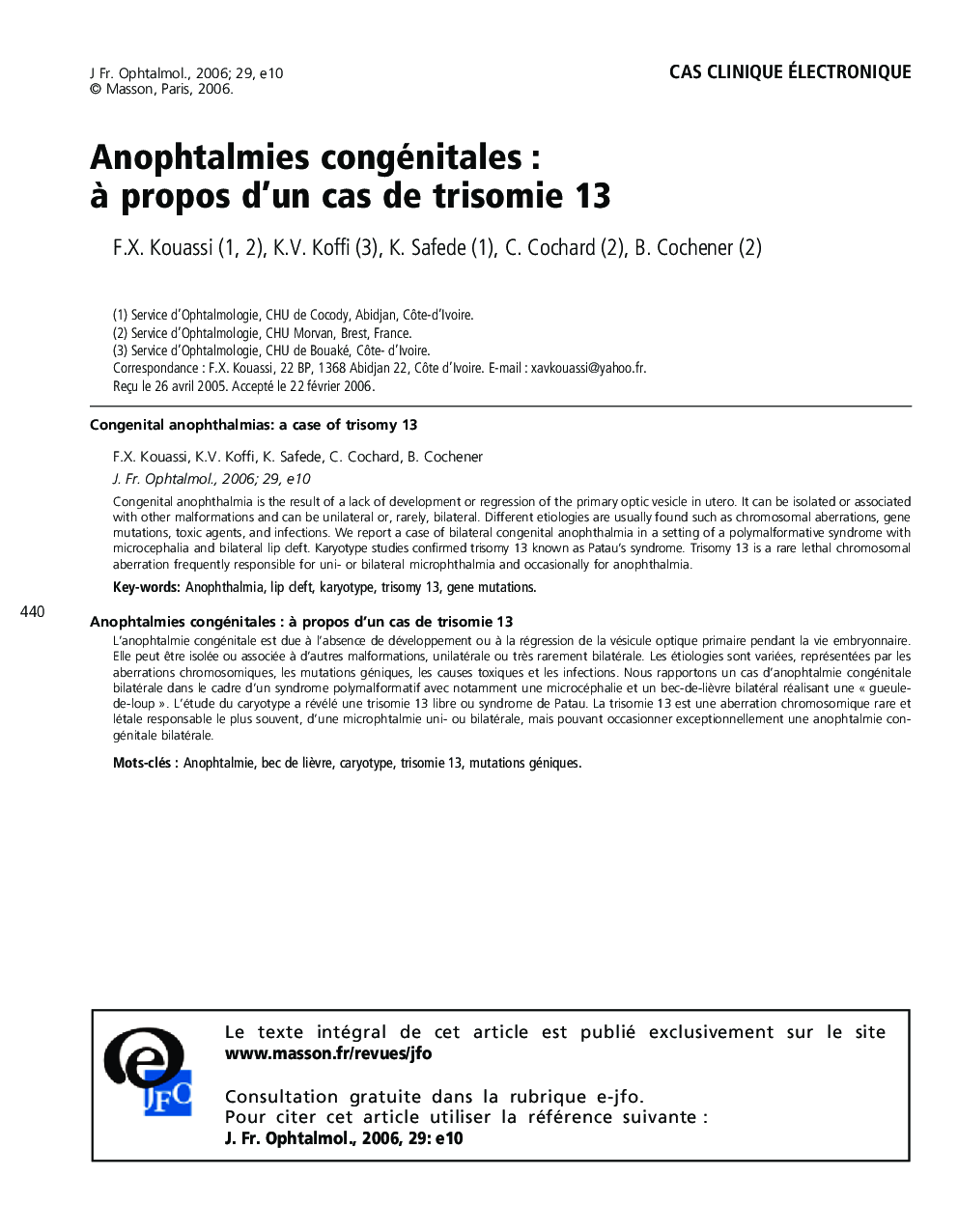| Article ID | Journal | Published Year | Pages | File Type |
|---|---|---|---|---|
| 4025638 | Journal Français d'Ophtalmologie | 2006 | 5 Pages |
L'anophtalmie congénitale est due à l'absence de développement ou à la régression de la vésicule optique primaire pendant la vie embryonnaire. Elle peut être isolée ou associée à d'autres malformations, unilatérale ou très rarement bilatérale. Les étiologies sont variées, représentées par les aberrations chromosomiques, les mutations géniques, les causes toxiques et les infections. Nous rapportons un cas d'anophtalmie congénitale bilatérale dans le cadre d'un syndrome polymalformatif avec notamment une microcéphalie et un bec-de-lièvre bilatéral réalisant une « gueule-de-loup ». L'étude du caryotype a révélé une trisomie 13 libre ou syndrome de Patau. La trisomie 13 est une aberration chromosomique rare et létale responsable le plus souvent, d'une microphtalmie uni- ou bilatérale, mais pouvant occasionner exceptionnellement une anophtalmie congénitale bilatérale.
Congenital anophthalmia is the result of a lack of development or regression of the primary optic vesicle in utero. It can be isolated or associated with other malformations and can be unilateral or, rarely, bilateral. Different etiologies are usually found such as chromosomal aberrations, gene mutations, toxic agents, and infections. We report a case of bilateral congenital anophthalmia in a setting of a polymalformative syndrome with microcephalia and bilateral lip cleft. Karyotype studies confirmed trisomy 13 known as Patau's syndrome. Trisomy 13 is a rare lethal chromosomal aberration frequently responsible for uni- or bilateral microphthalmia and occasionally for anophthalmia.
